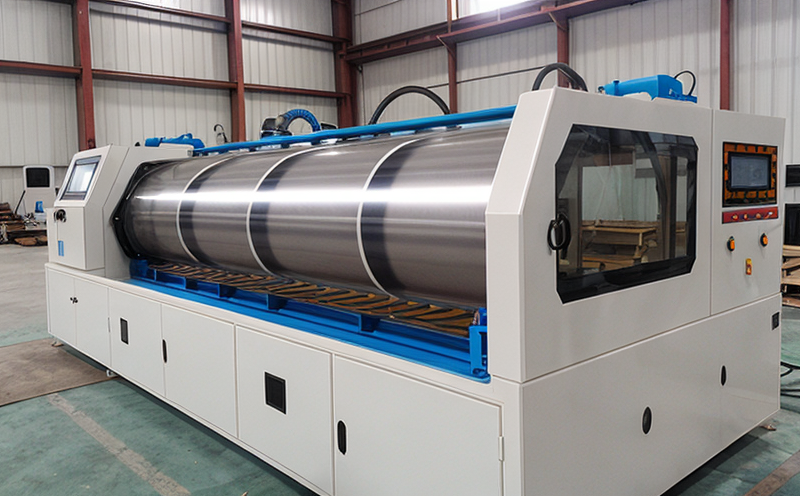Coating, Lamination & Finishing Testing
The process of coating, laminating, and finishing textiles is a critical aspect of modern textile manufacturing. Whether it's enhancing durability, improving aesthetic appeal, or providing functional properties like water repellency or flame resistance, these processes significantly influence the end product’s performance and marketability.
Coating involves applying a layer of material over another for protection or enhancement, lamination combines two or more layers using adhesives or heat, while finishing refers to treating textiles with chemicals or mechanical means. The success of these processes hinges on precise control and consistent quality, which is where specialized testing laboratories like ours come into play.
Our coating, lamination & finishing tests encompass a range of methodologies tailored to meet the unique requirements of various textile types and end uses. For instance, coated fabrics are often used in outdoor gear due to their waterproofing properties, while laminated materials find applications in medical garments or protective clothing. The finish applied can vary widely—from color treatments for aesthetic appeal to flame retardants ensuring safety standards.
Testing these processes involves a series of procedures designed to evaluate the effectiveness and durability of coatings, laminates, and finishes under real-world conditions. This includes determining adhesion strength between layers, water resistance, breathability, flexibility, and chemical resistance. Each test is meticulously planned considering factors like fabric composition, expected usage, environmental exposure, and regulatory compliance.
Adherence to international standards such as ISO 17865-2 for water repellency or ASTM D3922 for flame retardant performance ensures that our tests are both rigorous and relevant. By utilizing advanced instrumentation including Fourier Transform Infrared Spectroscopy (FTIR), Scanning Electron Microscopy (SEM), and Differential Scanning Calorimetry (DSC), we provide comprehensive insights into the molecular structure, surface characteristics, and thermal stability of coated, laminated, or finished textiles.
The results from these tests are crucial for quality assurance departments to ensure products meet stringent industry standards. They also serve as valuable data points during product development cycles, guiding improvements in formulation, application techniques, and overall manufacturing processes. Our expertise ensures that every test not only meets but exceeds client expectations, delivering reliable outcomes that can be confidently used for decision-making.
In summary, coating, lamination & finishing testing is an integral part of ensuring textile quality and performance. By leveraging our advanced capabilities and adherence to recognized standards, we help clients achieve excellence in their product offerings while maintaining regulatory compliance.
Benefits
The benefits of thorough coating, lamination & finishing testing extend beyond mere compliance; they significantly enhance the overall quality and marketability of textile products. Here’s how:
- Enhanced Durability: Tests ensure that coatings and finishes provide long-lasting protection against wear and tear.
- Aesthetic Improvement: Properly applied coatings and finishes can dramatically enhance the visual appeal of textiles, making them more attractive to consumers.
- Better Performance: Testing ensures that the functional properties like water resistance or flame retardancy are consistently maintained across batches.
- Regulatory Compliance: Adhering to international standards helps textile manufacturers avoid legal issues and maintain a positive reputation in the market.
- Innovation Support: By identifying potential improvements, tests enable continuous innovation within product development cycles.
- Cost Efficiency: Preventive measures against substandard materials save costs associated with rework or recall.
- Customer Satisfaction: Reliable testing builds trust and ensures customer satisfaction by delivering high-quality products.
In essence, these tests are not just about meeting standards; they form the foundation of successful textile manufacturing. Investing in robust testing enhances product quality, supports innovation, and fosters customer loyalty.
Customer Impact and Satisfaction
The impact of thorough coating, lamination & finishing testing on customers is profound and multifaceted. When textile manufacturers prioritize these tests, they demonstrate a commitment to delivering superior products that meet or exceed customer expectations:
- Improved Product Quality: Consistent adherence to quality standards ensures that customers receive textiles with enhanced durability, better performance, and improved aesthetics.
- Increased Market Trust: Compliance with international standards builds confidence among consumers who value reliability and safety in their purchases.
- Better Customer Retention: Satisfied customers are more likely to return to the same brand for future purchases, fostering loyalty and repeat business.
- Enhanced Reputation: A reputation built on quality and consistency attracts new customers and expands market share.
- Competitive Advantage: Superior testing capabilities set manufacturers apart from competitors, offering a competitive edge in the marketplace.
- Innovation Leadership: By staying ahead of industry trends through rigorous testing, companies can introduce innovative products that meet evolving customer needs.
Ultimately, these benefits translate into higher levels of customer satisfaction and loyalty, which are vital for sustained business success in the textile industry.
International Acceptance and Recognition
The importance of international acceptance and recognition cannot be overstated in today’s globalized market. Textile manufacturers who invest in comprehensive coating, lamination & finishing testing not only meet local regulations but also open doors to international markets:
- Broad Market Access: Compliance with recognized standards allows textiles to enter diverse markets without facing additional barriers.
- Competitive Advantage: Products that adhere to global standards are often perceived as higher quality, giving manufacturers a competitive edge.
- Increased Export Opportunities: Meeting international standards increases the likelihood of successful exports and broader market penetration.
- Better Negotiating Power: Companies with a strong reputation for compliance can negotiate better terms in international trade agreements.
- Enhanced Supplier Relationships: Establishing trust through consistent quality improves relationships with suppliers, leading to more favorable terms and conditions.
- Global Recognition: Achieving certification from respected bodies enhances the overall brand image and market presence.
In an increasingly interconnected world, these advantages are crucial for maintaining a competitive edge and achieving sustainable growth in the textile industry.





